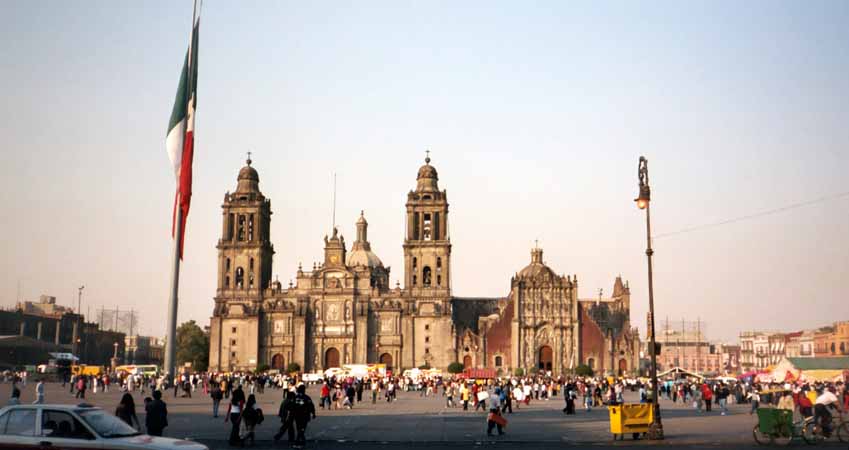
On December 4 I took a first class bus, which was only about one quarter full, from Oaxaca to Mexico City. I got my camera out to take some pictures along the way. Instead of immediately locking it in my daypack afterwards (I keep small combination locks on the two compartments of my daypack and usually keep them locked) I left the camera out in case I saw more scenery worth photographing. When we got into the Mexico City traffic I locked the bag up, thinking my camera was inside. I checked my seat area thoroughly before leaving the bus, as I always do to make sure I don't leave anything. My guidebook was full of warnings about the risks of Mexico City, with a section devoted to crooked cab drivers, so I ignored the driver trying to corral me and used the official taxi service in the station. I checked into a comfortable room near the city center in Hotel Principal for about $20.
The next day I decided to use the wall safe that was in the room to store my passport and camera before going out. That is when I discovered that I no longer had a camera. I took a taxi back to the bus station in the faint hope that the camera had been turned in to lost and found, but of course it wasn't. The bus station employees I talked to promised to keep an eye out for the camera and talk to the driver of the bus when he returned that day, but it was clear that they thought it was futile. They were correct. While in the bus station I saw a large, prominent sign that said (this is the English translation, I don't recall the exact words in Spanish) "Do you know how many lost bags are turned in? Disgracefully few!" There is a problem with theft and the government knows it, but clearly does not know what to do about it. What I really resent is this happened on a first class bus; there was nobody on board who was hungry or wearing rags. Whoever took my camera was not desperate, he just saw and opportunity to steal something and took it.
The next few days I shopped around Mexico City for a replacement camera. I learned why digital cameras would be a popular item to steal, in Mexico City they are ridiculously expensive. Film cameras were also seriously overpriced. Even second hand cameras in pawn shops are more expensive than new digital cameras are in the U.S. If you are traveling in Mexico keep a close eye on your camera and maybe carry an inexpensive spare, you do not want to buy a camera in that country. I paid $50 for a clunky, basic Minolta with battery and film, I could have bought a better camera for about $20 in the U.S. The number and quality of my pictures go way down from here on. Sorry.
So I arrived in Mexico City on December 4 and didn't accomplish much besides looking for my lost camera and then a replacement until December 10. I did visit the Zona Rosa on the evening of the 6th. In spite of the name the Zona Rosa is an entertainment district, not a red-light area. It has some decent bars and restaurants but was not very convenient to get to from the center. On Wednesday, December 10 I took my clunky new camera to the Zocalo, the central square. Below is the Cathedral, the National Palace, and an interesting old building on the southeast corner of the Zocalo:

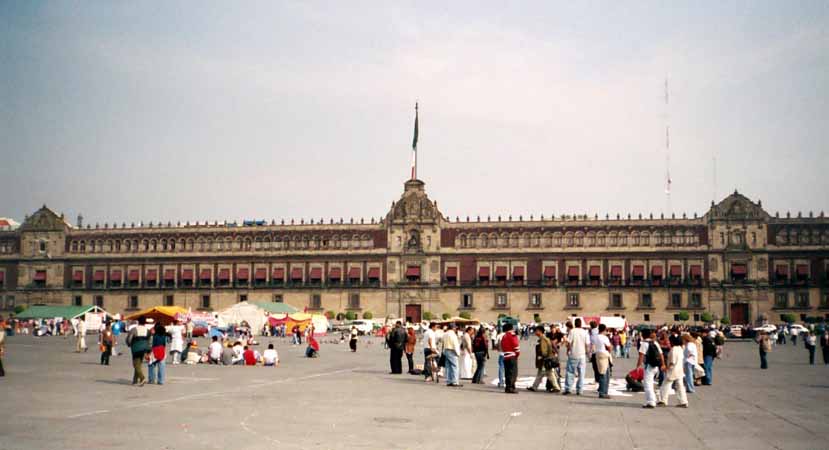
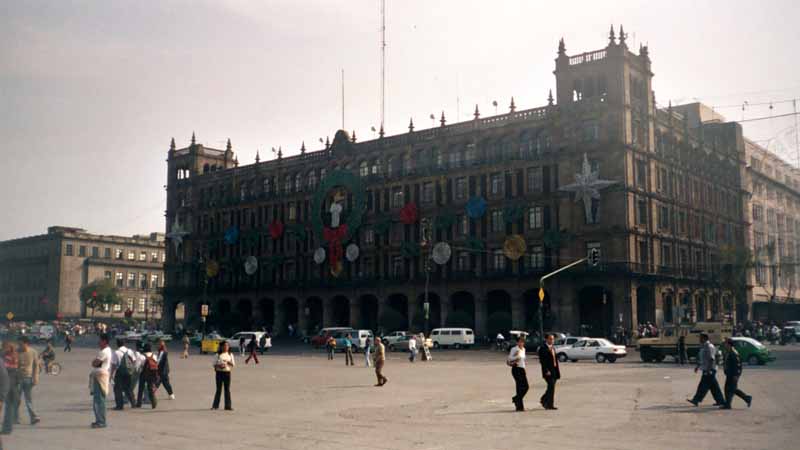
A couple of shots of the inside of the Cathedral:
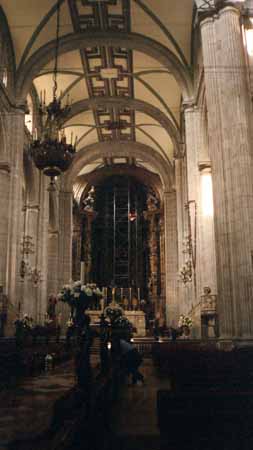
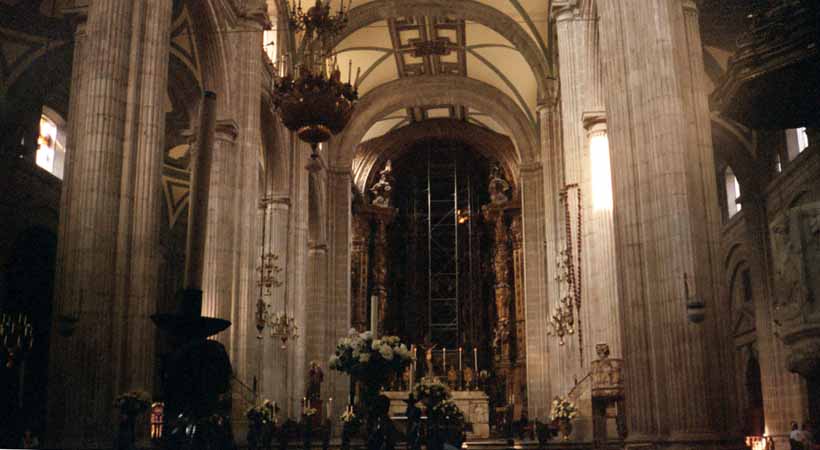
And some pictures of the courtyard and historical mural in the National Palace:
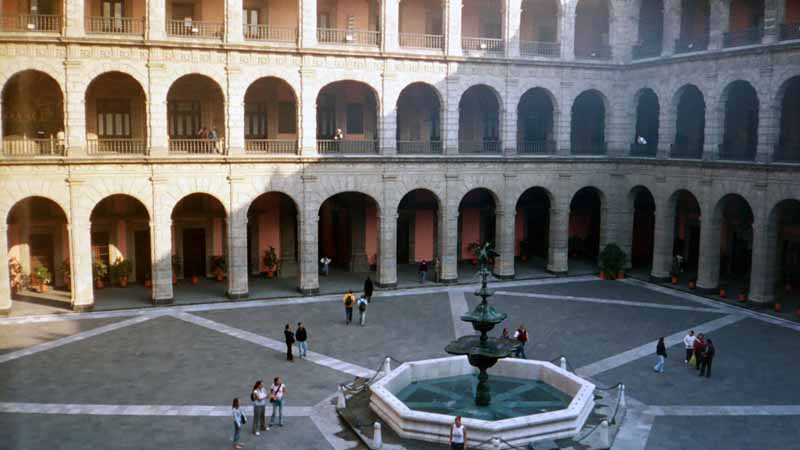
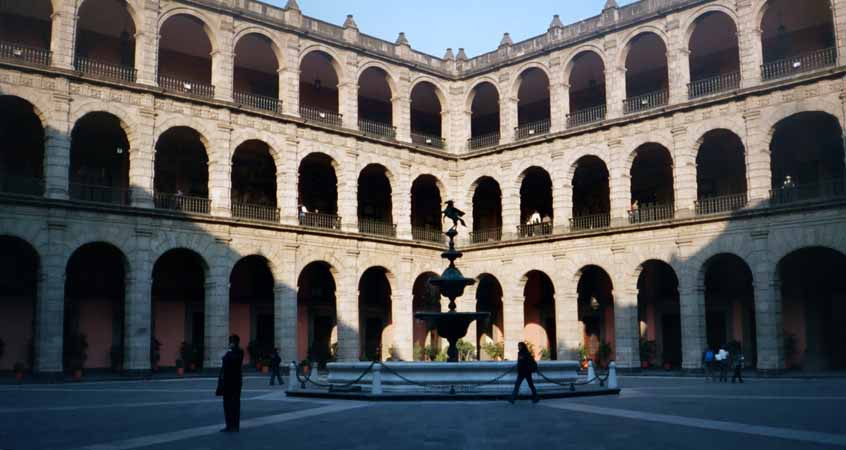
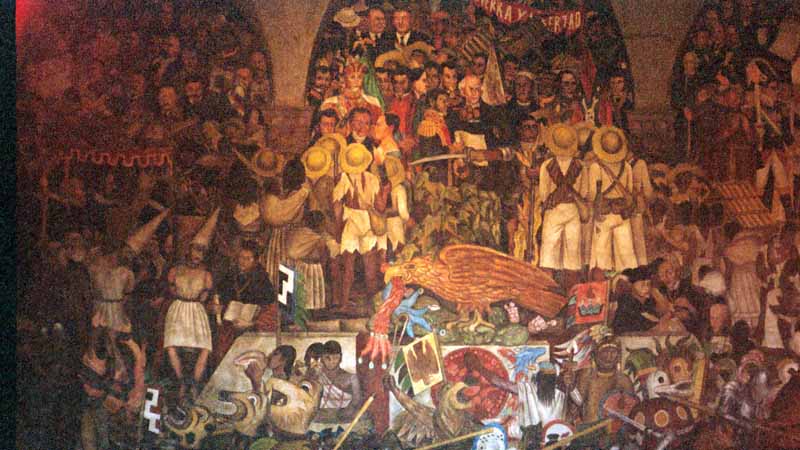
Immediately northeast of the Zocalo is the remains of the Temple Mayor, the Aztec pyramid that was destroyed and partially dismantled by the Spanish to build the Cathedral. It was rediscovered in 1978 and the colonial buildings on top were demolished to restore what remains. This is supposed to be the sacred spot where the Aztecs saw an eagle clutching a snake, a sign from the gods to build their city on this spot. It was begun in 1375 and had several improvements over the years. All significant alterations were accompanied with the sacrifice of captured warriors. Historians believe that after a major reconstruction in 1487 twenty thousand people were sacrificed by having there hearts cut out. The Aztecs were one of many tribes in what is now Mexico in the fifteenth century, and while they were good at conquest, they weren't very good at making friends. Cortes didn't have much trouble finding local allies to help him defeat the Aztec.
Here are a few pictures of what is left of Temple Mayor. The third picture is of a skull altar:
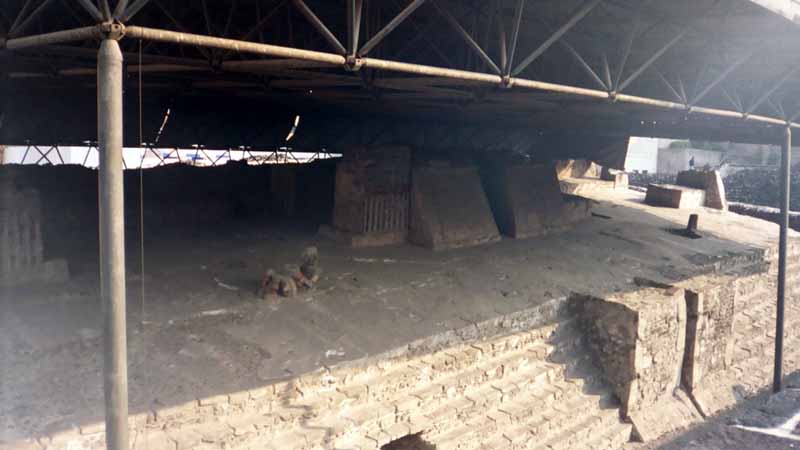
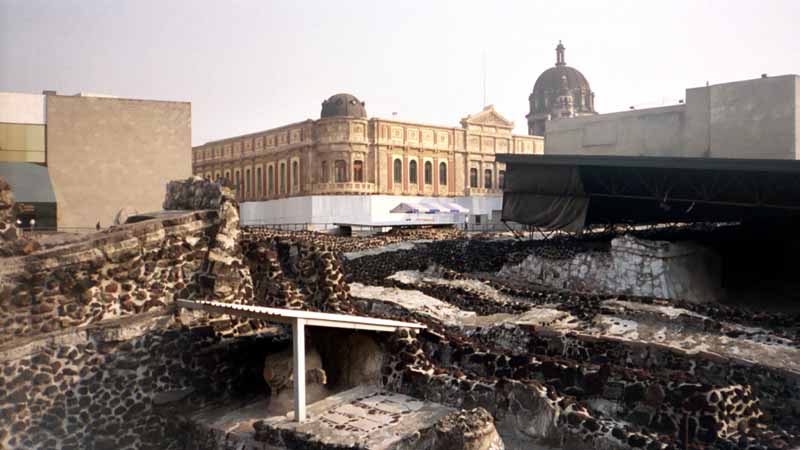
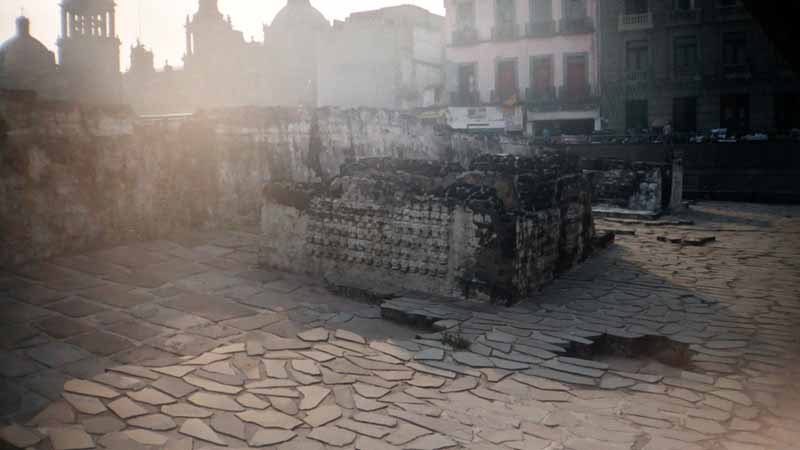
At one corner of Temple Mayor is the Museo del Temple Mayor with some of the artifacts excavated on the site. The first two pictures are models of the Temple and the city before its conquest. I think the last picture is of the eight ton stone disc of the Aztec water goddess Coyolzauhqui. It was the unearthing of this disc by electrical workers that led to the discovery of the Temple:
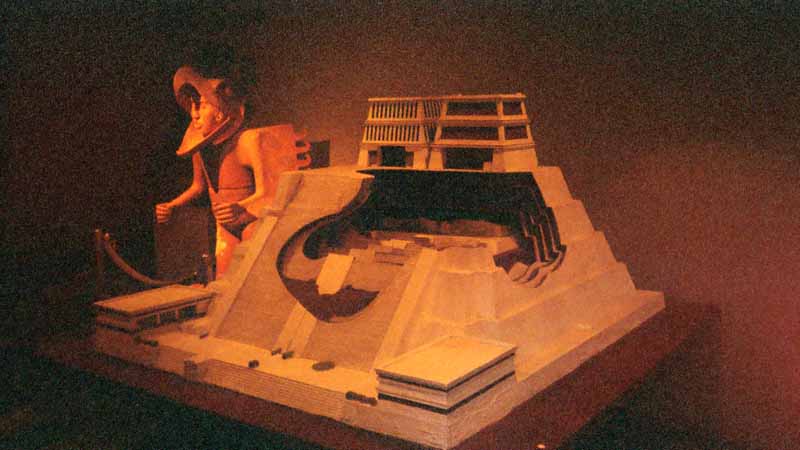
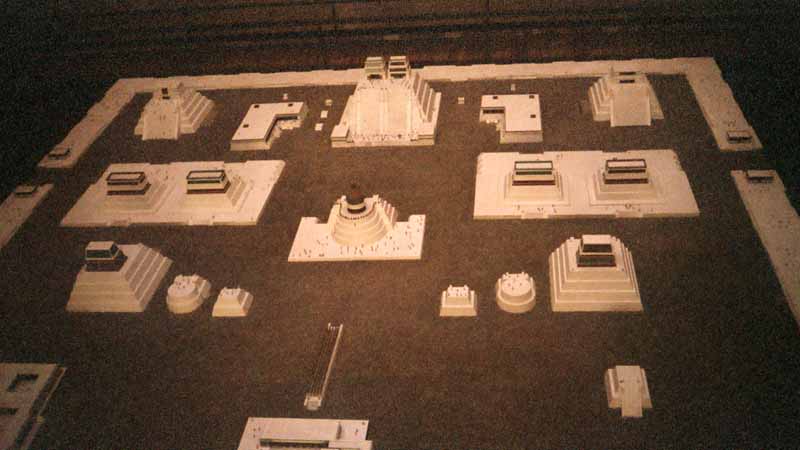

After the museum I went to the large park called Alameda Central and took a picture of the Palacio de Bella Artes. This is really a nice theater, comparable to the best of the European Opera Houses. That evening I returned to see Ballet Folklorica, which was much better than I expected. I'm pretty low brow, but I'm glad I caught this show. The inside of the theater is really nice, unfortunately all I have is this one outside shot:
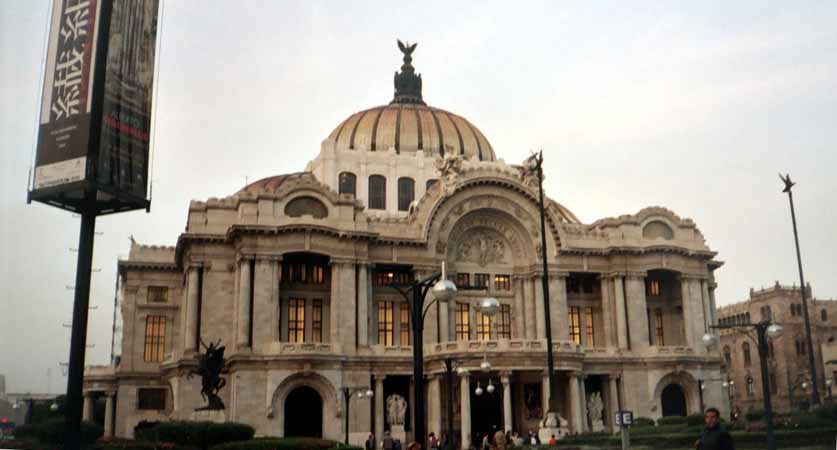
Two days later I went to the top of the Torres Latino for some city views from up high. In order, the following are shots taken in the direction of the Cathedral and Zocalo, the Palacio de Bella Artes, west over Alameda Central, and a shot showing the city skyline disappearing into smog:
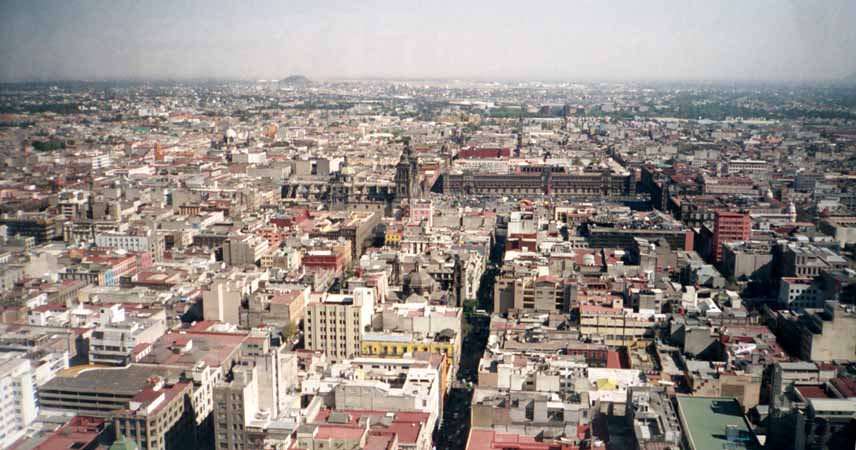
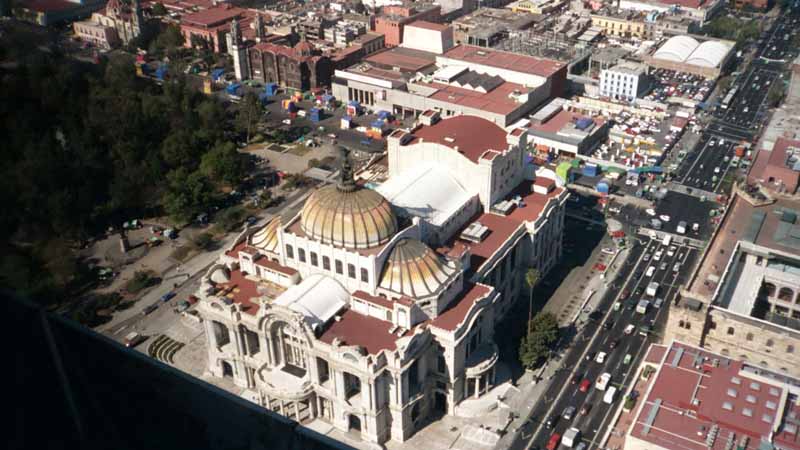
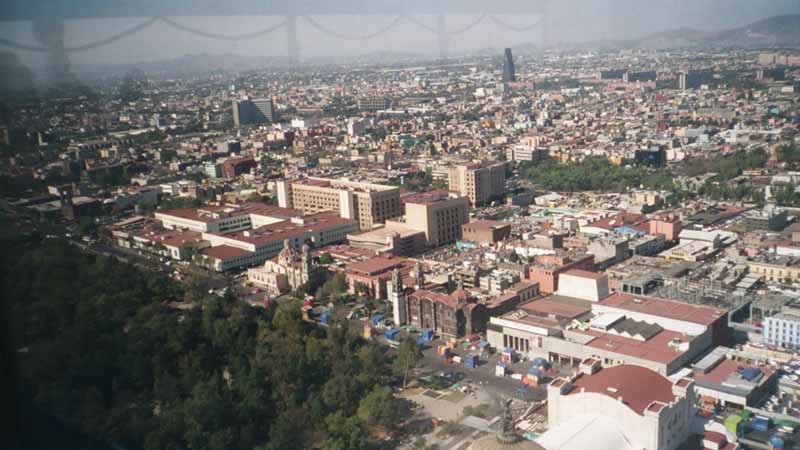
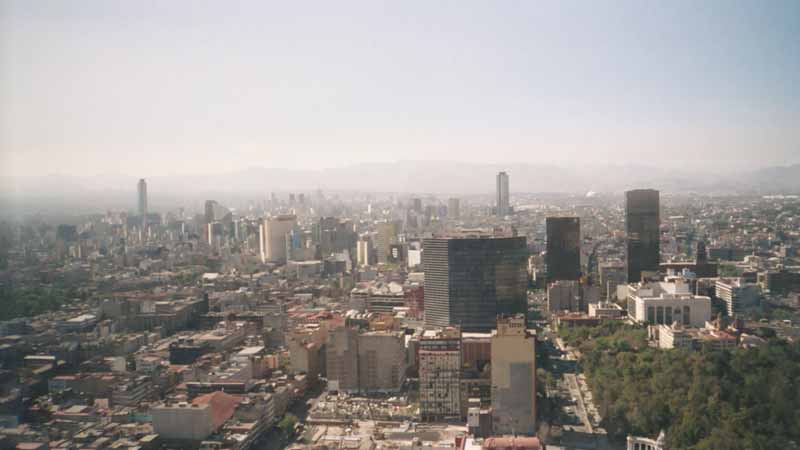
I spent two days touring the Museo de Antropoloia, which is really good. The emphasis is on Mexican history, pre-history and culture. Here are a few items I thought interesting. The first is the museum courtyard:
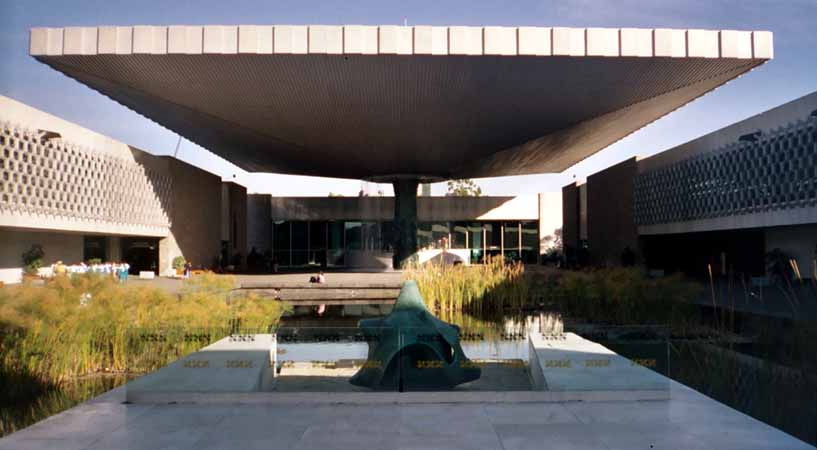
A model of the Mexico City before the arrival of the Spanish:
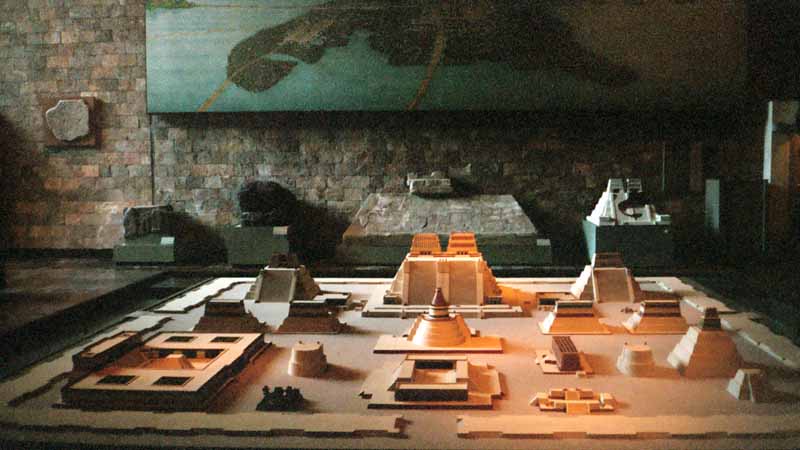
The decorated skulls of people sacrificed by the Aztecs:
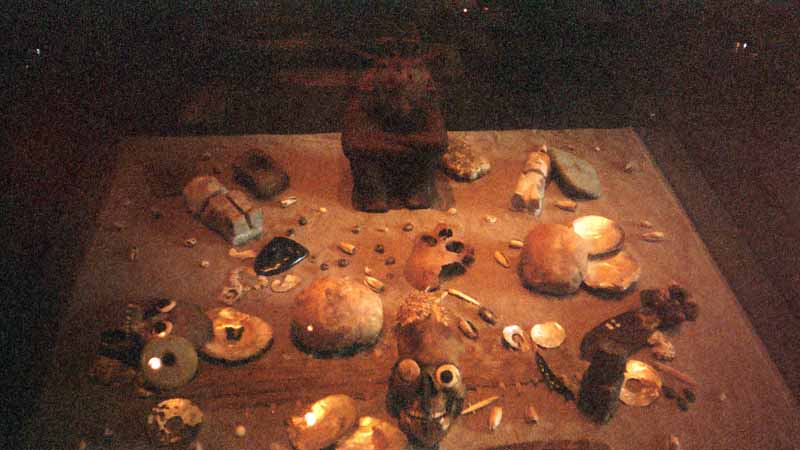
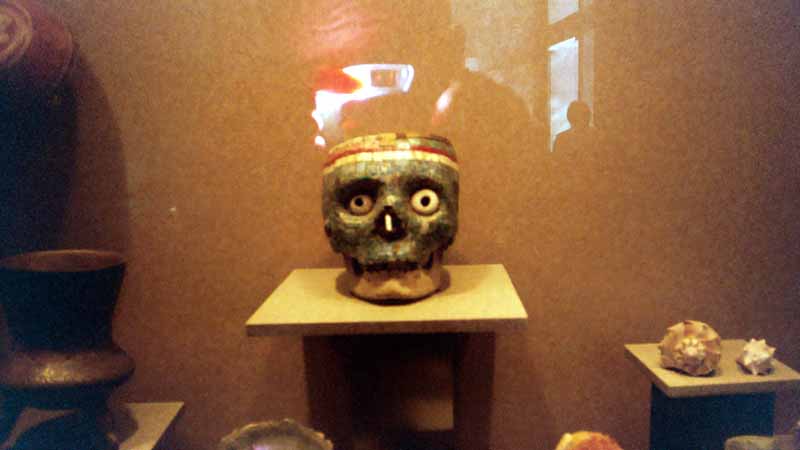
A Jaguar sculpture with a cavity in the back for the hearts and blood of people sacrificed. The Aztecs obviously took human sacrifice very seriously:
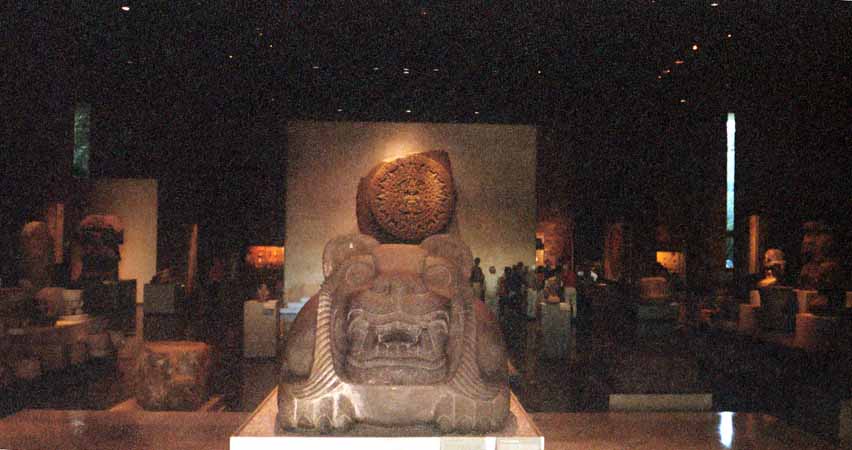
A rattler sculpture, I'm not sure from what culture. Rattlesnakes were important in many pre-Columbian religions:
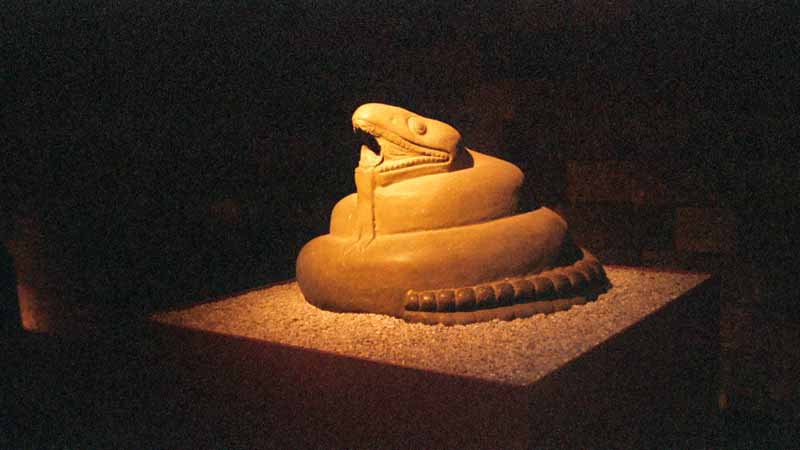
Mayan skulls which were intentionally deformed while the owners were young and the bone somewhat malleable. The Mayans considered skull deformation attractive. As seen here it doesn't do much for me, but I suppose these two individuals looked better when they were alive:
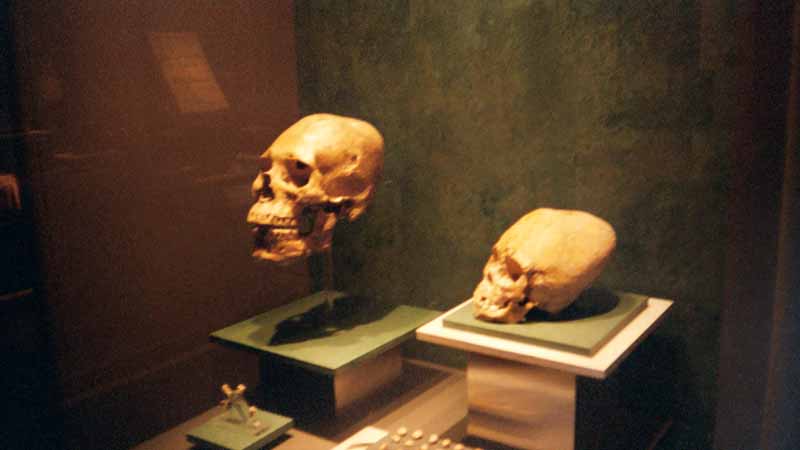
The funeral mask and jewelry of King Pakal, found in the Templo de los Inscripciones in Palenque:
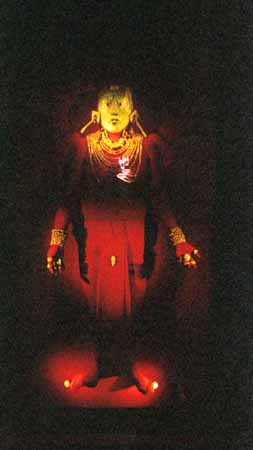
This is only a small sampling of what is in the Museum, it is definitely one of the best reasons to visit Mexico City.
While in Mexico City I took a day trip to Teotihuacan, which needs its own page.